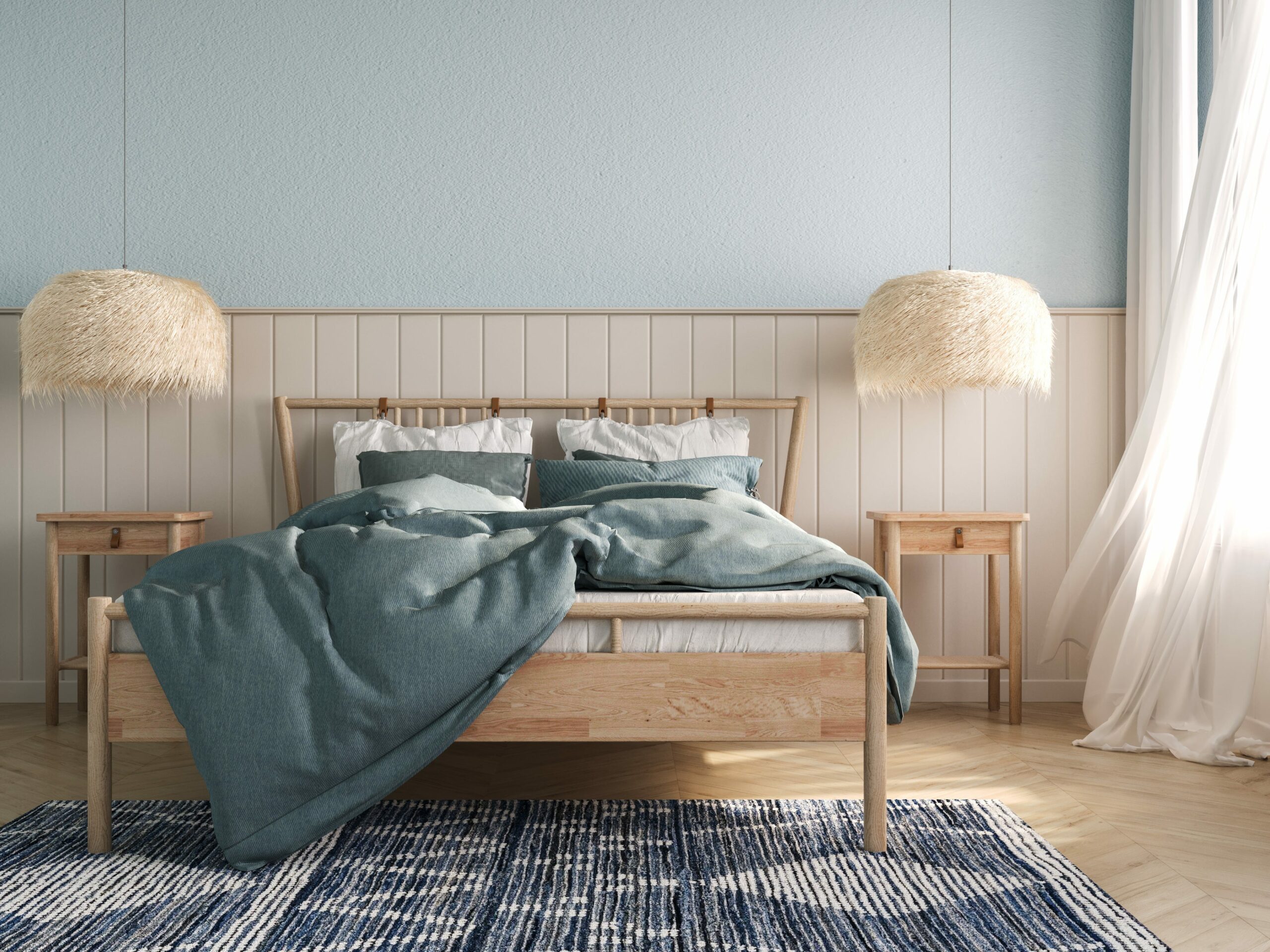Could This Little-Known Scandinavian Sleep Trick Be the Secret Weapon to Saving Your Relationship Tonight?
Picture this: the lights are out, everything’s silent, and you’re just about to slip into dreamland—when suddenly, the blanket tug-of-war begins. One small nudge, then another, and bam! Your partner’s claimed the covers, leaving you shivering or sweltering, wide awake and pondering life’s unfairness. Sound familiar? You’re not alone. For countless couples, these nightly skirmishes add up to sleepless frustration. But what if I told you there’s a Nordic secret to reclaiming your sleep and sparing your relationship from cover-related cold wars? Meet the Scandinavian Sleep Method—a clever, cozy practice that’s turning heads on TikTok and transforming bedrooms from battlegrounds into peaceful havens. Curious how sharing a bed and your own duvet can actually bring you closer together? Let’s dive in.

The lights are off, the room is quiet, and you’re about to drift off into dreamland—until the familiar rustle starts. A small pull, then another, and suddenly your partner has stolen the blanket. The nightly tug-of-war begins, leaving you either too warm or too cold, and definitely too awake.
For many couples, these tiny frictions add up to one big problem. But a long-standing Nordic tradition—now trending on TikTok—could be the solution. It’s called the Scandinavian Sleep Method, and it might just save your sleep… and your relationship.
What is the Scandinavian Sleep Method?
The Scandinavian Sleep Method is a co-sleeping technique where each person uses their own duvet or comforter while sharing one bed. Rooted in Nordic values of autonomy and balance, it’s standard practice in countries like Denmark, Norway, and Sweden. Essentially, this method lets each partner control their own sleep setup, promoting deeper rest and fewer midnight disruptions.
And while it may sound less romantic than sharing one big blanket, respecting individual sleep needs can actually strengthen intimacy, says Roni Beth Tower, PhD, a psychotherapist, retired psychology professor, and author. How? Well, poor sleep impacts emotional regulation, leading to irritability and conflict—two intimacy killers. But when partners give each other room to sleep the way they need to, that can actually make a couple feel closer and more connected, Tower says.
Why The Scandinavian Sleep Method Works
Research shows couples often feel they sleep better together, even though objective measures of sleep appear to be worse when compared to them sleeping alone. Even so, sharing a bed can boost REM sleep—the stage linked to mood and memory—and foster feelings of closeness, says Deirdre Conroy, PhD, a board-certified behavioral sleep medicine specialist and clinical professor at the University of Michigan Department of Psychiatry.
But when one partner snores, tosses, or overheats, the opposite happens. Nearly a third of U.S. adults have slept separately (known formally as a “sleep divorce”) to cope, according to the American Academy of Sleep Medicine. “You spend a third of your life in bed,” says Shea Soucie, principal and co-founder of Soucie Horner Design Collective. “Your sleep setup is not about your relationship. It’s about comfort, body alignment, and temperature.”
It’s also worth noting that sleeping separately doesn’t automatically mean a couple has a “dead” bedroom. “People think it indicates that something is wrong with the relationship, but that doesn’t need to be the case at all,” says Tina Sundelin, PhD, Assistant Professor in the Department of Psychology at Stockholm University.
Still, some couples don’t want to give up sleeping next to each other, which is why the Scandinavian Sleep Method has become an increasingly popular alternative. It allows couples to personalize sleep without sacrificing physical closeness. That matters because “touch is an essential human need,” says Tower. “When both partners feel capable and cared for, trust, intimacy, and the desire for closeness naturally grow.” Essentially, maintaining this physical closeness can strengthen emotional closeness—and what couple doesn’t want that?
Another major benefit of the practice: climate control. “Temperature preference when sleeping is highly individualized,” Conroy says. “For example, women experiencing menopausal hot flashes may also enjoy a cooler duvet. This method allows each person to sleep comfortably with their individual sleep needs met.”
If you and your partner are struggling with sleep differences, communication—and timing—is key. “Problem-solving discussions always have better odds of working effectively when both partners are well-rested, not hungry, and in a good mood,” says Susan Heitler, PhD, author of The Power of Two: Secrets to a Strong & Loving Marriage. Read: Don’t bring up changing your sleeping arrangements when you’re frustrated in the middle of the night or first thing in the morning after a poor night’s sleep. “Just as plants thrive in sunshine, relationships thrive on positivity,” Heitler says. “Positivity is enhanced by feeling well-rested.”
Once you’ve set aside time to chat, the best approach is for each partner to clearly share their concerns. For example, you might be disturbed by your tossing-and-turning partner, while close contact helps them feel relaxed and sleep better. Then, brainstorm solutions together. “Offer what you can contribute to the plan of action, and avoid telling your partner what to do,” Heitler says.
Ultimately, the best sleep setup is the one that gets you both rest. But the Scandinavian Sleep Method is not only approved by sleep and relationship experts; it’s also winning over real couples.
For Haley, 32, this method has drastically reduced nighttime disruptions. “I used to wake up often in the middle of the night because I was cold—only to realize my husband had pulled all the covers to his side of the bed…Now I don’t wake up unless it’s my own fault for tossing while sleeping,” she says. “Plus, we don’t feel animosity towards each other because we’re disrupting each other when we’re trying to sleep.”
Another woman highlights the method’s customizable temperature control as a huge benefit. “I run hot, so sharing a duvet with my husband has always been a challenge (he’s like a human space heater). The Scandinavian Sleep Method gives us both space to cool off and lets us pick our own covers,” says Jen*, 37. “He likes a heavier duvet (for a weighted blanket feel), and I prefer a lighter coverlet.”
And if you’re unsure whether switching up your sleep sitch will make a real difference, it did for Sarah, 29, and her husband. “This legitimately changed the game for our marriage. We both sleep so much better, and we don’t argue as much—about who stole the covers or in general,” she says. “I wish we had tried it sooner.”
How to Try the Scandinavian Sleep Method at Home
Ready to try it out? All you need is one fitted sheet and two duvets—no top sheet required. Choose fabrics that fit your sleep style: breathable cotton or linen for hot sleepers, heavier weaves for those who run cold. “Some people think the more expensive sheet is better, but that’s not the case,” Soucie says. She also recommends testing pillows based on your sleep position.
For the actual covers, be mindful of color selection. “I would definitely encourage couples to choose the same color,” says Clara Jung, founder and lead designer at Banner Day Interiors. “At the very least, choose complementary colors for a more cohesive look.”
Or maybe you’re worried it all might look too matchy-matchy? “Choosing a color family and picking different hues within that color family is a great way to add depth to your bedding ensemble,” Jung says. She also recommends choosing a fitted sheet with a pattern. “It will give a peek of interest when the bed is made. Many make the mistake of choosing the same color throughout all their bedding which can look flat.”
If you and your partner simply can’t decide, you can never go wrong with white bedding accented with colorful pillows and blankets, says Soucie. “There’s something peaceful about a beautifully-made bed that’s quiet, crisp, and clean.”
If two duvets look messy, layer a light coverlet on top for a clean finish. Keep styling simple (no more than two throw pillows) and embrace the relaxed “Scandinavian Tuck,” where duvets are loosely draped rather than tightly tucked for a cozy, lived-in look. And if you want to give your bed that signature Scandi puffy look, fold the sides of the duvet in slightly.
The proof is under the covers: Separate duvets don’t create distance—they make space for better sleep (and a better relationship, too).



















Post Comment